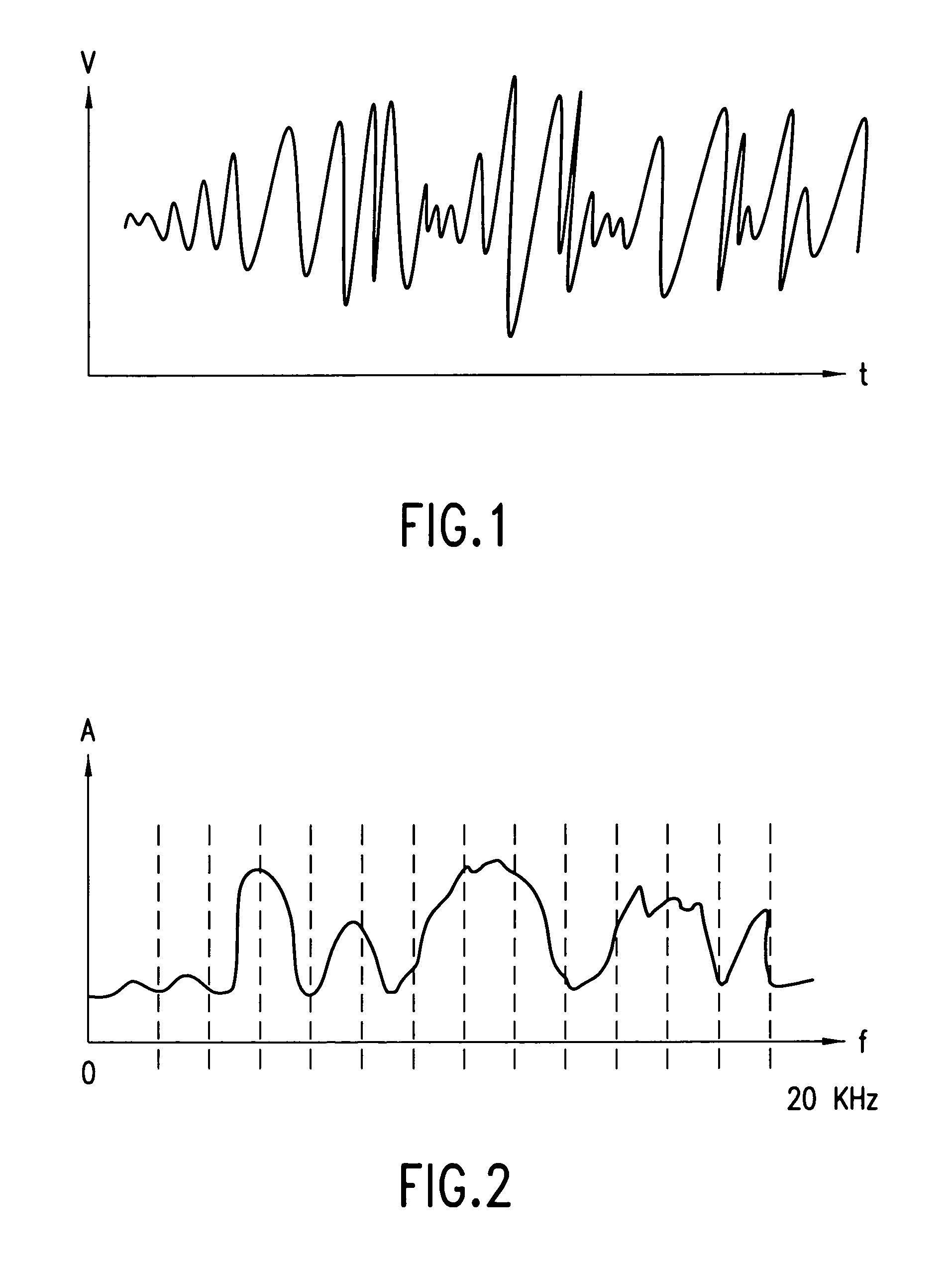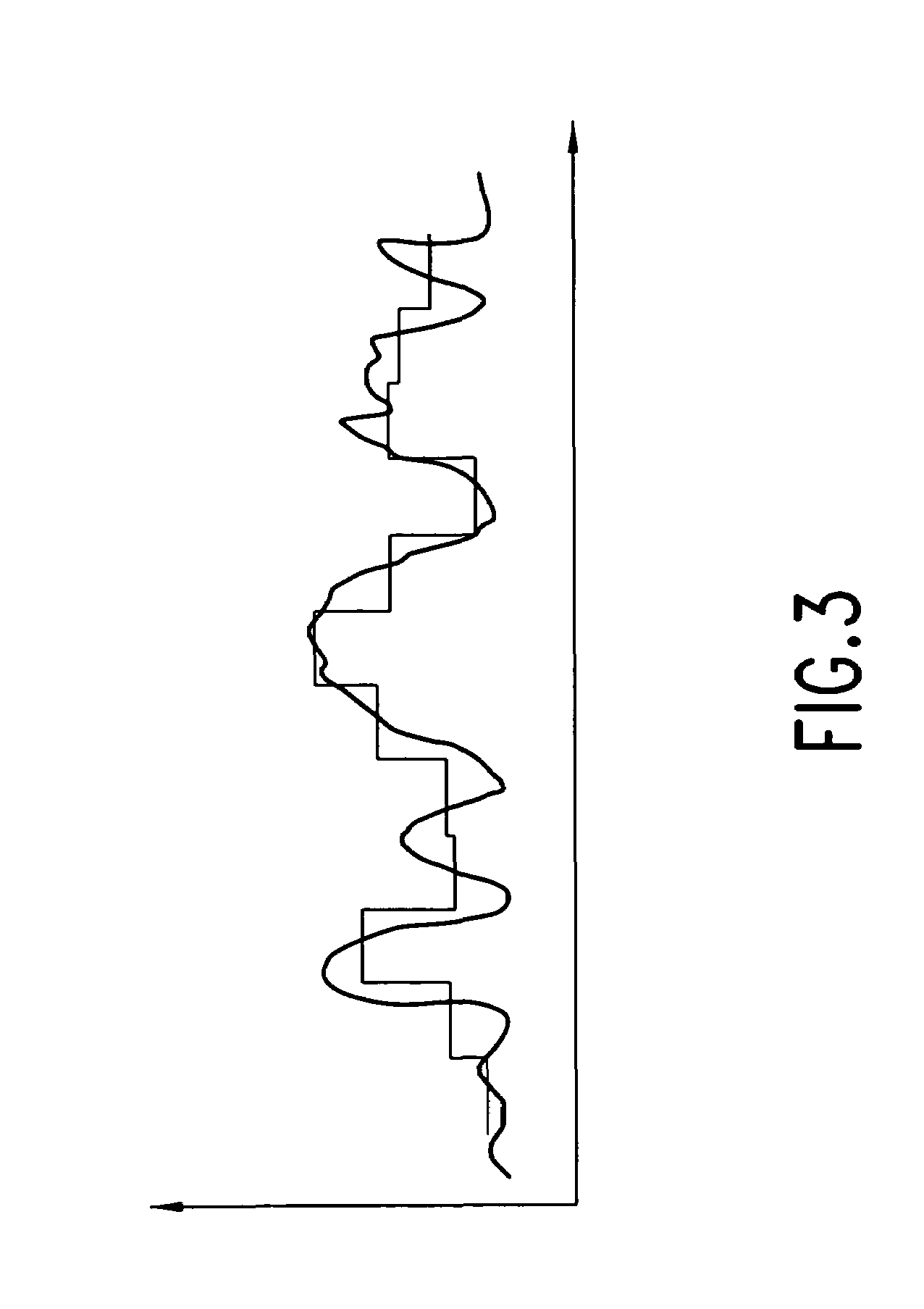Speech recognition for recognizing speaker-independent, continuous speech
a speaker-independent, continuous speech technology, applied in speech recognition, speech analysis, instruments, etc., can solve the problems of inability to realize speech recognition, inability to meet the needs of speech recognition, and wide variation of speech between persons,
- Summary
- Abstract
- Description
- Claims
- Application Information
AI Technical Summary
Benefits of technology
Problems solved by technology
Method used
Image
Examples
Embodiment Construction
[0042]FIG. 4 shows a speech recognition device 400 according to one embodiment of the invention. The speech recognition device 400 includes an input / output (I / O) device 401, a frequency domain converter 406, frequency domain output storage 410, a processor 414, and a memory 420.
[0043]The speech recognition device 400 of the invention performs speech recognition and converts a voice stream input into a digital voice stream representation. The voice stream representation comprises a series of symbols that digitally represents the voice stream and may be used to recreate the voice stream.
[0044]The speech recognition is accomplished by finding transnemes in the voice stream and converting the found transnemes into speech units of a predetermined verbal language. A speech unit may be a word, a portion of a word, a phrase, an expression, or any other type of verbal utterance that has an understood meaning in the predetermined verbal language.
[0045]A phoneme is generally described as being...
PUM
 Login to View More
Login to View More Abstract
Description
Claims
Application Information
 Login to View More
Login to View More - R&D
- Intellectual Property
- Life Sciences
- Materials
- Tech Scout
- Unparalleled Data Quality
- Higher Quality Content
- 60% Fewer Hallucinations
Browse by: Latest US Patents, China's latest patents, Technical Efficacy Thesaurus, Application Domain, Technology Topic, Popular Technical Reports.
© 2025 PatSnap. All rights reserved.Legal|Privacy policy|Modern Slavery Act Transparency Statement|Sitemap|About US| Contact US: help@patsnap.com



